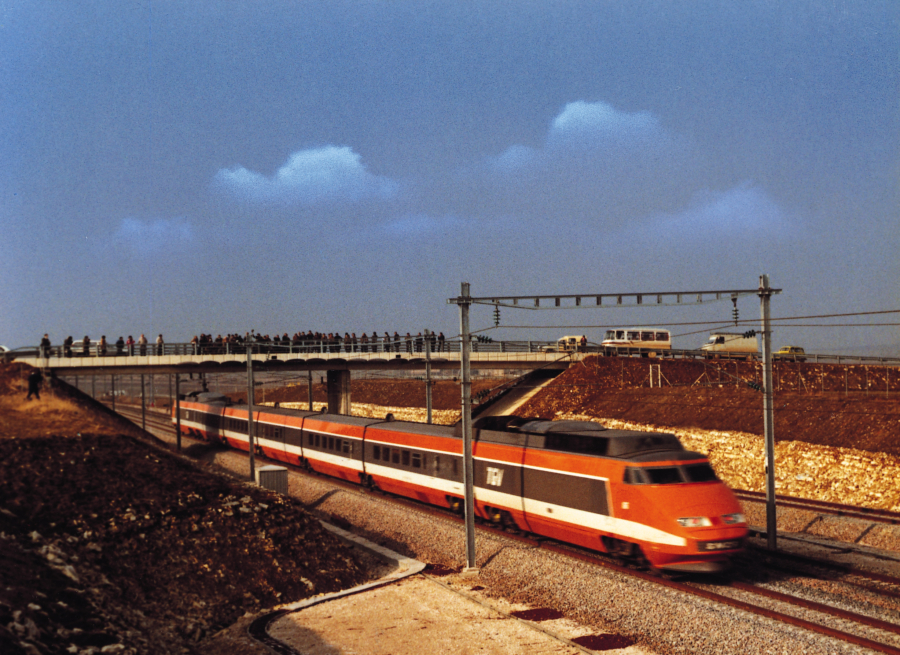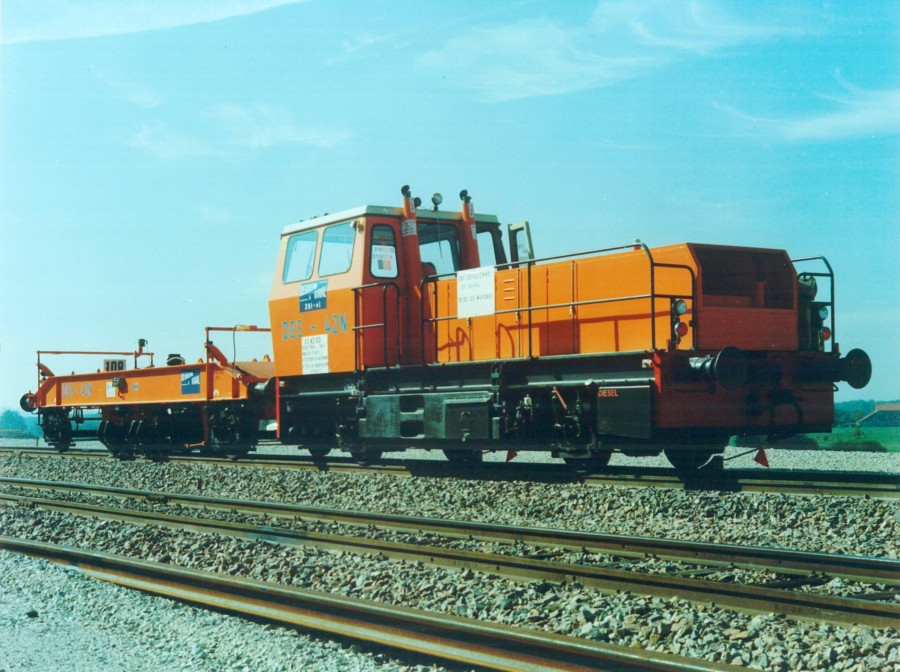
Dynamic stabilisation has become indispensable to sustainable track maintenance. This is all the more important as traffic loads increase.
The principle of arranging the track so that it floats in the ballast bed became established early on in railway history and is still widely used today. Today, we have extensive physical knowledge. Unlike then, we know why the ballast bed is such an effective component. Modern methods for producing the optimal ballast bed are based on this knowledge.
Dynamic track stabilisation is one of those methods. It is essential for constructing and maintaining heavily utilised lines. By providing perfectly prepared lines, this method has also played a part in achieving world speed records. Decades of research and know-how continuously improved this technology. Still, the full potential is not yet exhausted.
Work on the superstructure reduces the track panel’s lateral resistance against deformations. The Dynamic Track Stabiliser anticipates operational loads in a controlled way and ensures a controlled settlement while exerting rather low stresses on the ballast bed. As a result, the track’s resistance to lateral displacement and dangerous buckling increases considerably.
Thanks to the increased lateral track resistance, there is no need to impose speed restrictions after tamping. The homogenisation of the ballast bed ensures that the track geometry is significantly more durable. In addition, the intervention limit is reached much later and intervals between maintenance measures are extended. Maintenance costs are reduced.
Dynamic track stabilisation is absolutely vital to ensure that the track geometry quality of the ballasted track remains at a high level over a longer period of time.
Starting in the 1950s, technological advances lead to ever-increasing requirements that were also placed on the superstructure. These included continuously welded rails and the first high-speed lines. Engineers were particularly concerned about lateral track geometry stability. They were looking for practical solutions to increase lateral track resistance.
In the 1970s, the idea of developing a device that would be able to make the track panel vibrate in order to achieve improved ballast compaction and a more stable track geometry was born. The "Dynamic Track Stabiliser" (DGS) proved to be very effective. Within a few years, it had secured its place in track maintenance. It has become part of standard maintenance procedures on a global scale.

First reactions In early 1981, a TGV set the new record on the Paris-Lyon line with a speed of 380 km/h, breaking the record set in 1955. What was special about the preparation was that for the first time, a DGS had been regularly operated on a French line. In a speech on the occasion of the world record, SNCF Deputy Director General Jean Dupuy commented on the economic benefit.
“The results achieved on 25 and 26 February were made possible by the fact that the track was virtually in top condition. The accuracy of the devices and the almost fully automatic methods that were applied for maintaining the track were proven in a spectacular manner. Moreover, the high quality of wheel guidance and the low detectable forces suggest that the TGV trains will place even less stress on the track than we had anticipated. These two observations have prompted us to reduce the originally planned maintenance work for this new line in a way that also leads to a reduction in operational costs.”
